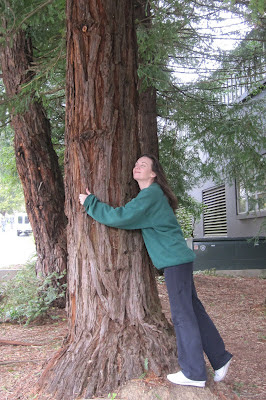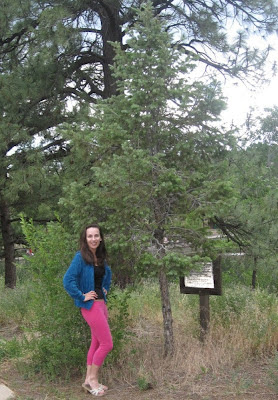Seventeen trees down, 75 to go! I seriously bit off more than I could chew again. When I first learned about the Apollo Moon Trees, and resolved to go visit as many as I could, I figured there were a few dozen. The catalog wasn't all that long in 2009 when the tracking project revived.
California 3 Redwoods (Sequoia sempervirens), 1974
While mapping all the moon trees in America and abroad, my list stretched to 80 in total! I'm glad to see more companies and universities submitting their records to be counted now, but I've since given up being able to see all of the known plantings. So far, the most I have managed is six sites in California, one of which had multiple moon trees, and a seventh tucked away in the Grand Canyon State... not easy to find! Many of the resources online only give general whereabouts, so it often requires some detective work to find the right spots.
California Redwood (Sequoia sempervirens), 1976
In many cases, the trees are marked with signs, commemorating the Apollo 14 mission in 1971, when NASA astronaut Stuart Roosa took the 500 tree seeds into space; however, many gifted with moon tree saplings in the 1970s lament that their signs have eroded or been stolen over the years. In a few cases, the trees have perished, leaving only the paperwork behind... and in one case, I found a tree that died -- but the plaque was still there.
Happily, the largest contingent are trees that have flourished, growing taller in some cases than the "control trees" planted adjacent or nearby. In the case of all the California Giant Sequoias, micro-gravity clearly had no effect on the seeds! After planting, they thundered upward hundreds of feet, and there is no difference in their health as opposed to trees germinated on Earth.
Arizona Douglas Fir (Pseudotsuga Menziesii), 1976
The majority of the trees were planted during various American Bicentennial celebrations in 1976, as noted by their signs. However, the earliest were planted in 1974, and after a sparse smattering in the 80s and 90s, some of the second-generation moon trees were planted as recently as 2011.
The Sycamores seemed the hardiest species in terms of survival, followed by the Redwoods, then the Loblolly Pines and Douglas Firs. The Sweetgums seemed to fare the worst, with only two known specimens left in existence.
California Redwood (Sequoia sempervirens), 1976
Next up, I still have some road trips to see the trees in Lockeford and San Dimas; perhaps I'll even head north to see a few in Oregon...
To see all the California moon trees I've visited, and their signs, plus the one I visited in Arizona on the way home from driving to the STS-135 Space Shuttle Launch, go to the Pillownaut Gallery, or simply click on any of the pictures.






































































